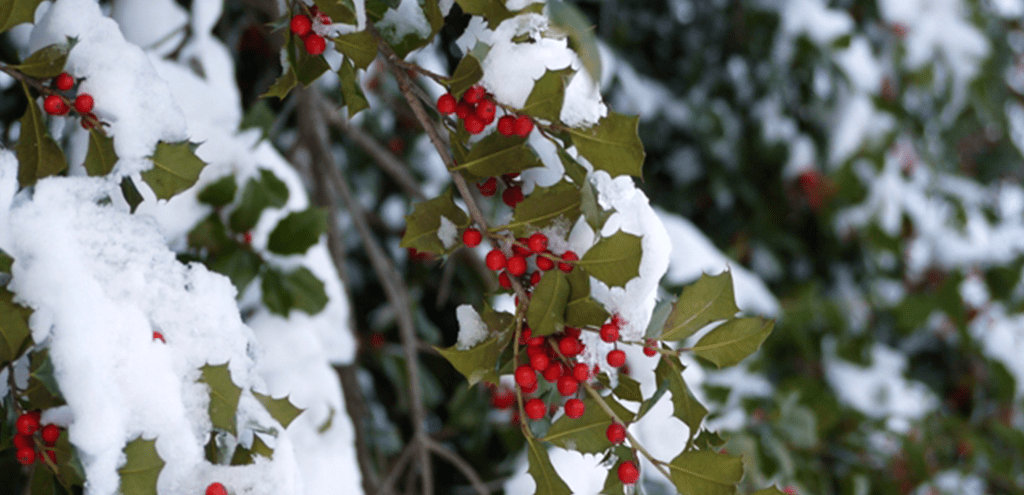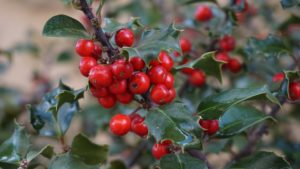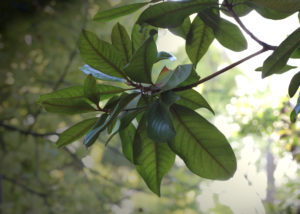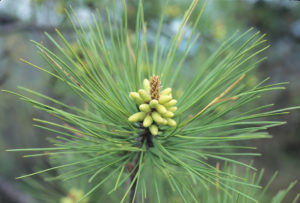
Winter has arrived in our nation’s capital. With or without snow, the leaves of many deciduous trees have fallen, some of the most vibrant trees in our city become more apparent. All of these trees can add some color year round to your yard when you plant them through our residential planting program, RiverSmart Homes and/or get up to $50 back for planting these trees yourself through our tree rebate program.
 Virginia Pine | Pinus virginiana
Virginia Pine | Pinus virginiana
Often used as a bonsai specimen, the Virginia pine is a unique and attractive tree with a sinuous trunk and orange-red bark. Look for a small-medium tree with (typically) a single round trunk and an irregular crown and smooth, then reddish, scaly, finally gray-brown, thick, shaggy bark, and short, yellow-green needles paired in fascicles (bundled), with pinecones that are 4-7 cm long. Aside from being a good nesting site for woodpeckers, the Virginia pine continues to be the one of the most popular Christmas trees. Even better yet? This tree is available through our residential planting program, RiverSmart Homes and/or you can also get up to $50 back for planting this tree yourself through our tree rebate program.
 American Holly | ilex opaca
American Holly | ilex opaca
You will recognize an American Holly by its gray bark and its small and stiff oval-shaped leaves, which have spiny thorns along the edges. The leaves usually grow densely and the tree’s overall shape tends to be pyramidal. When ripe, its small round fruits are usually bright red. White-petaled flowers come out in the spring. It is a small tree, and while it can get over 50 feet tall, it often grows far shorter than that, thriving in the shade of taller trees – known as an understory tree. It is also the state tree of one of our neighbors – Delaware! This tree is available through our residential planting program, RiverSmart Homes. You can also get up to $50 back for planting this tree yourself through our tree rebate program.
 Eastern Red Cedar | Juniperus virginiana L.
Eastern Red Cedar | Juniperus virginiana L.
These stately trees are expansive – first seen on Roanoke Island, Virginia, they’re native in 37 states, ranging down eastern United States from from Ontario to northwestern Florida and as far west as North Dakota and Texas. Look for its notable features including its aromatic nature – the wood’s strong fragrance actually deters moths, and is thus the reason it was often used to line “cedar chests.” The wood is reddish-brown, with a fibrous form, and though the tree is known for its recognizably narrow and compact crown, the trunk is often angled and can take on unique shapes. The tree’s cones are used as a flavoring for gin. These are excellent urban trees as they are very low to no-maintenance, and can thrive in tough urban soils.This tree is available through our residential planting program, RiverSmart Homes. You can get up to $50 back for planting this tree yourself through our tree rebate program.
 Southern Magnolia | Magnolia grandiflora
Southern Magnolia | Magnolia grandiflora
The Southern Magnolia, an iconic gem of the south, is the granddaddy of magnolias with the largest specimens growing past 100 feet tall. You cannot mistake the leaves of the Southern Magnolia – leathery with a shiny dark green on top, and a rich bronze hew and a fuzziness beneath. And don’t forget those flowers, which are 6-8 inches across and pure white. These flowers bloom prolifically in the early summer and can continue to appear in smaller numbers for the rest of the season. If you want to make it part of your landscape this tree demands that you give it some space to grow and it is well worth it. It is a tree that you can pass on to your grandchildren and theirs too. We also have a sweetbay magnolia available for our residential planting programs, which grows to only 15-20 feet in height (a more manageable size for many properties in DC).
 Loblolly Pine | Pinus taeda
Loblolly Pine | Pinus taeda
The loblolly pine is a relatively fast-growing evergreen known for its straight trunk, upright form and distinctive bark that forms broad, reddish-brown plates. Its narrow form allows it to occupy a variety of yard spaces, and over time its crown of attractive green needles spread out to provide shade below. Believe it or not, the Loblolly pine is the second most common species in the United States (after the red maple). You can also get up to $50 back for planting this tree yourself through our tree rebate program.

